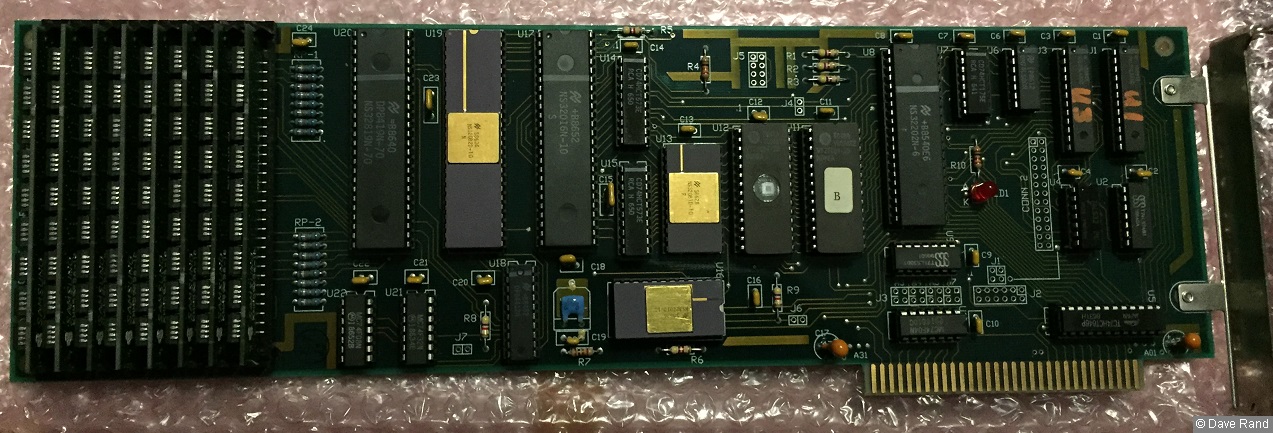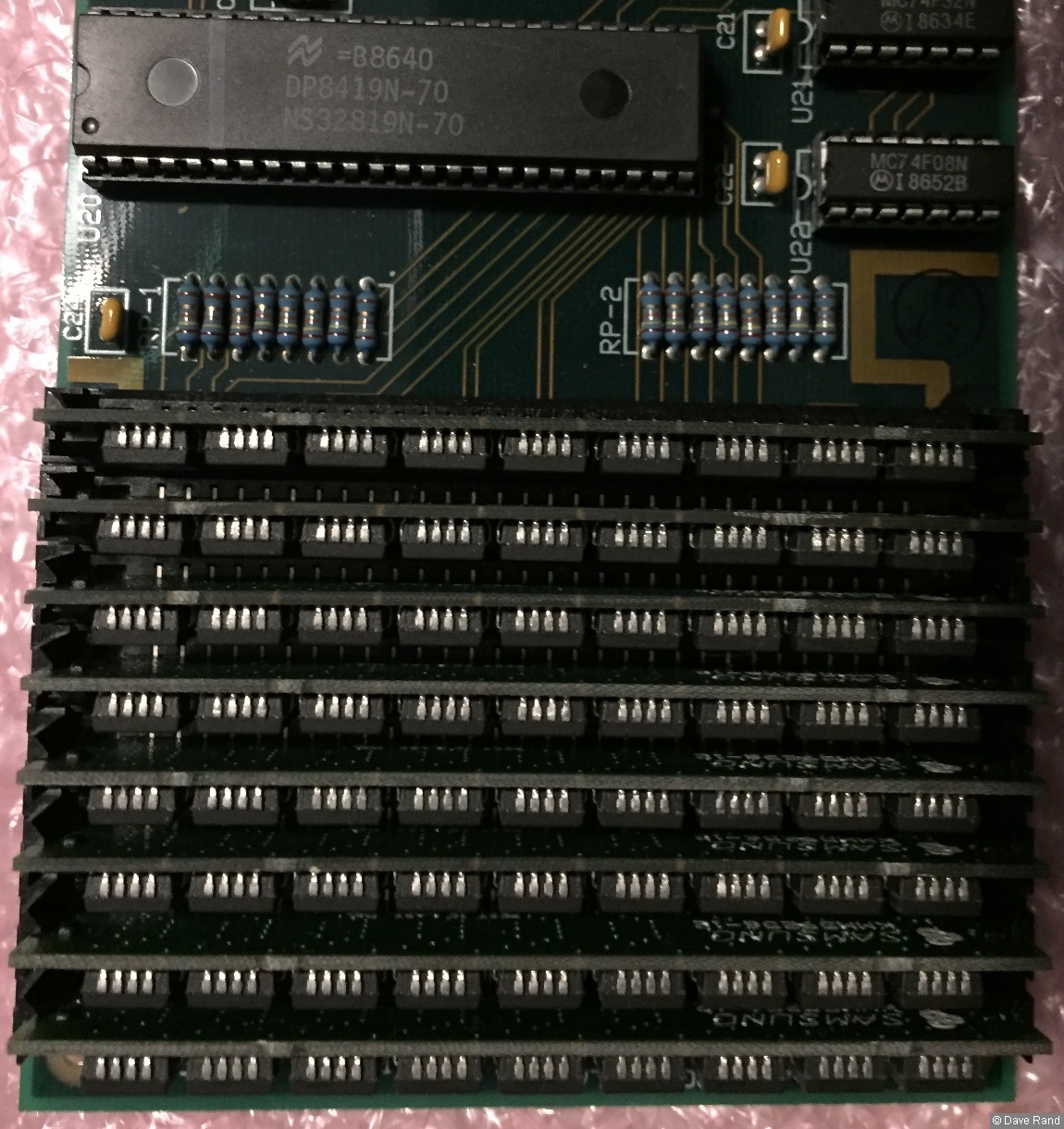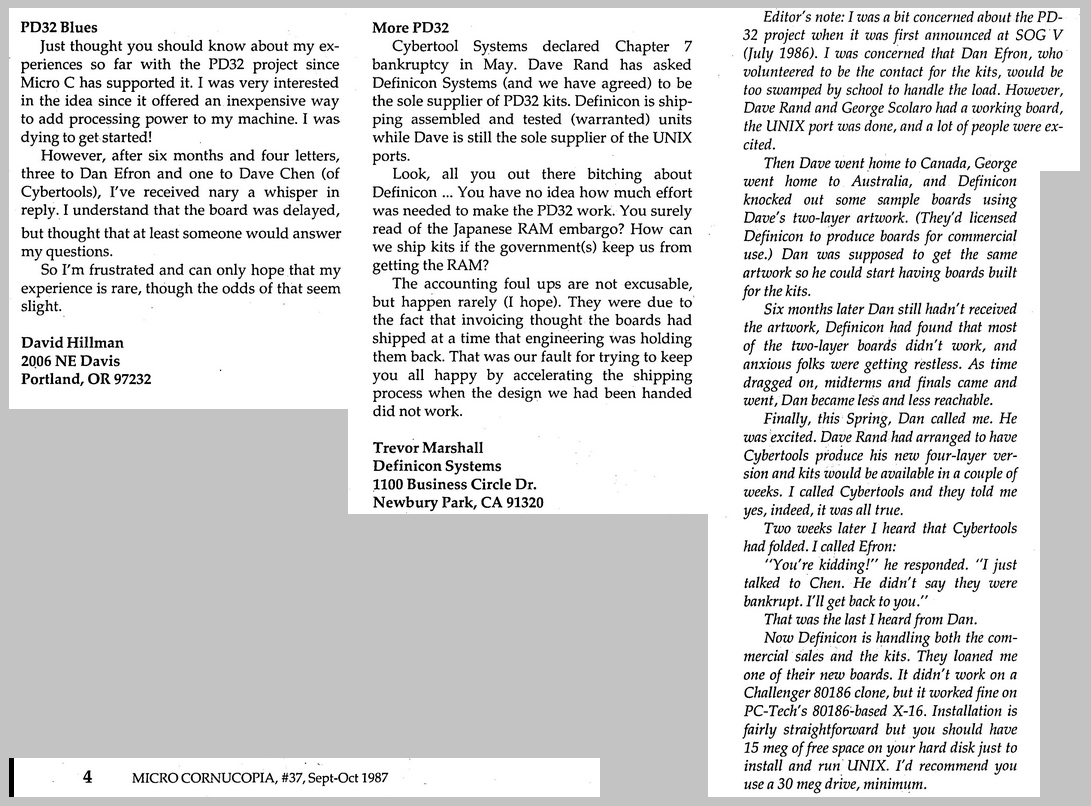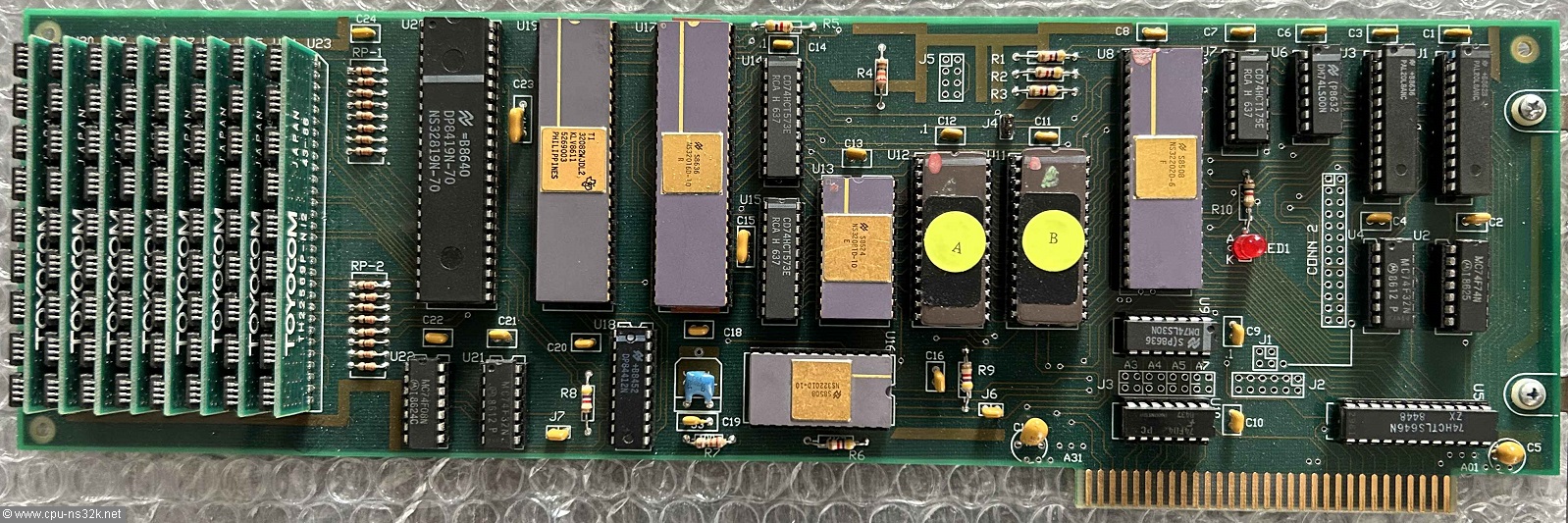PD32
The PD32 (shortform of "Public Domanin 32000") is the work of Dave Rand and George Scolaro. These people are well known for their efforts to make the DSI-32 at Definicon. The DSI-32 was the first PC add-on board computer based on the National Semiconductor Series 32000. This happened around 1985.
One year later Dave and George created a cheaper version of the DSI-32. The goal was to build a system where all the schematics, PAL equations, the interface software and the PCB layout were public. Commercial copying of the hardare was not allowed without a license from George. Dave did the same with the software.
To lower the cost the PD32 used only the 16-bit NS32016 CPU. The DSI-32 could use the 32-bit NS32032 CPU or the 16-bit NS32016 CPU. But the PD32 was also more modern because of the use of the first DRAM DIMMs. This saved a lot of board space and allowed the PD32 to hold 2 Mbytes of main memory. Another change was the addition of program storage on the board. The DSI-32 had to load every bit of software from the host. Another way to bring the cost down was to use only two layers for the board layout.
There were some articles describing the PD32 in the October 1986 issue of the magazine Micro Cornucopia. This was a private magazine popular in the US during the 1980's. Someone scanned the old paper and stored it at www.archive.org. The link to the mentioned issue is here.
The PD32 could be used also with simple systems like a Z80 computer. There were some hardware options included in the design to let the many 8-bit computer users have access to 32-bit technology.

Fig. 1. The PD32 configured for use in a IBM PC. The following Figures 2 to 4 show the board from right = top to left = bottom.

Fig. 2. The right part of the board contains the NS32202 ICU and the two PALs U1 and U3. Both PALs are of the type 20L8.

Fig. 3. The middle part of the board contains the CPU cluster and the EPROMs for program storage. Unusual is the early NS32016 CPU in a plastic DIP.

Fig. 4. The left part of the board contains the DRAM controller DP8419 and the DRAM DIMMs. The DIMMs have a parity bit but it is not used.

Fig. 5. A detailed view of a DRAM DIMM. The early DIMMs had only an 8-bit plus parity bit databus. The DRAM chips were made by Samsung.
In Figure 5 the names of the designer can be seen at the left edge of the board. But why is Definicon printed on the board above the names?
Since Summer 2017 Dave is working on a successor of PD32. He is thinking of many new peripherals. I will present any results here.
The Story behind PD32
The previous text represents my knowledge as of Summer 2017. In January 2023 Jonathan gave me a hint that the magazine Micro Cornucopia published two letters to the editor and an editor's note about PD32. I have put the original text in the next Figure (Thank's to archive.org for saving all this little details of computer history).

Fig. 6. The text gives more insight into the fade of PD32 and the company Cybertool Systems.
Another PD32 Board
In Spring 2023 I learned that someone whom I know for quite some time has a "Definicon" board. I expected a true one. But it was a PD32. For this board I don't know of any software or hardware description.

Fig. 7. The probability is high that this board will never be in use again. Sad.
Revival of PD32
In February 2024 Andrew Lynch informed me that he made a schematic of the PD32 and also works on the layout of the PCB. Andrew likes hardware more than software (like me) and therefore he is looking for software supporters. If you want to come in contact with him he can be reached at yahoo.com with the name lynchaj.
More informations about PD32 is given at hackaday.io.
This chapter was last modified on 24 February 2024. Next chapter: Richard